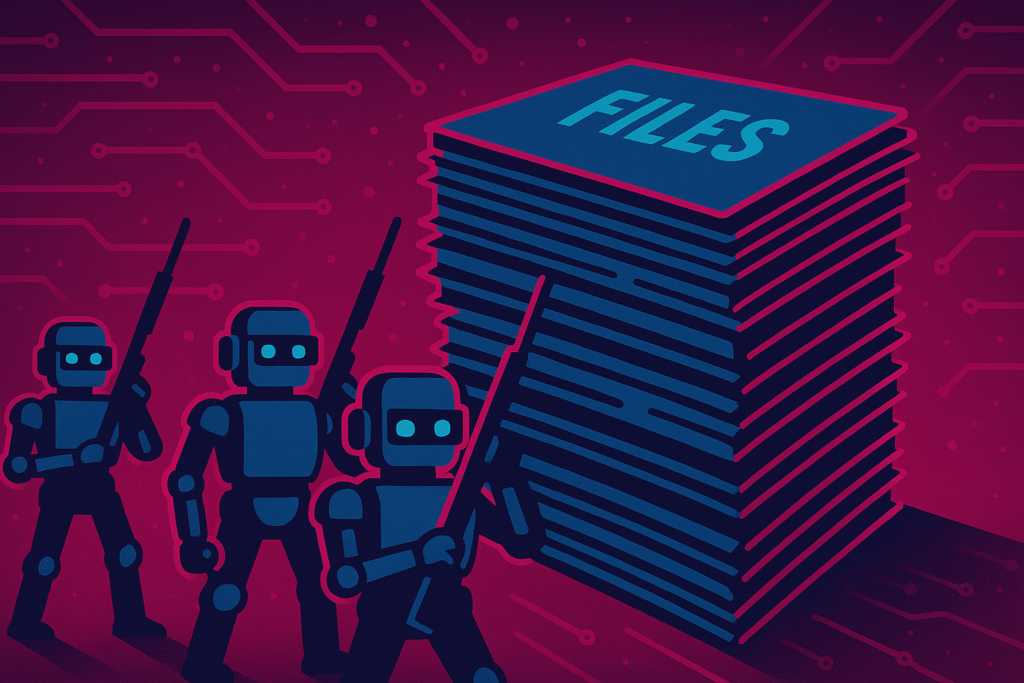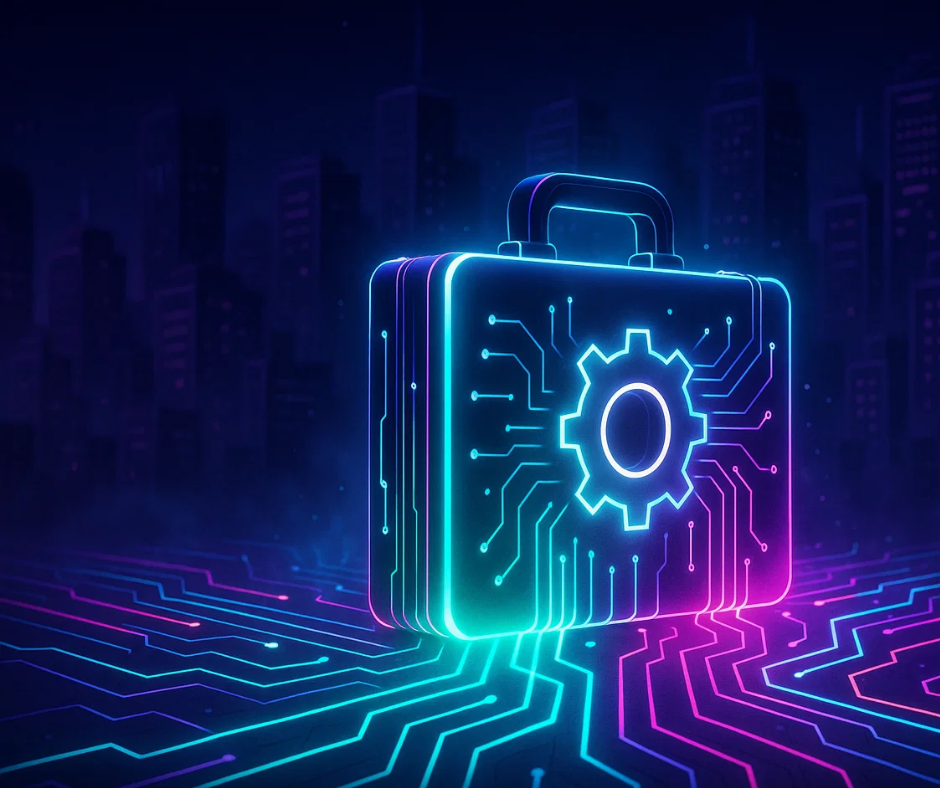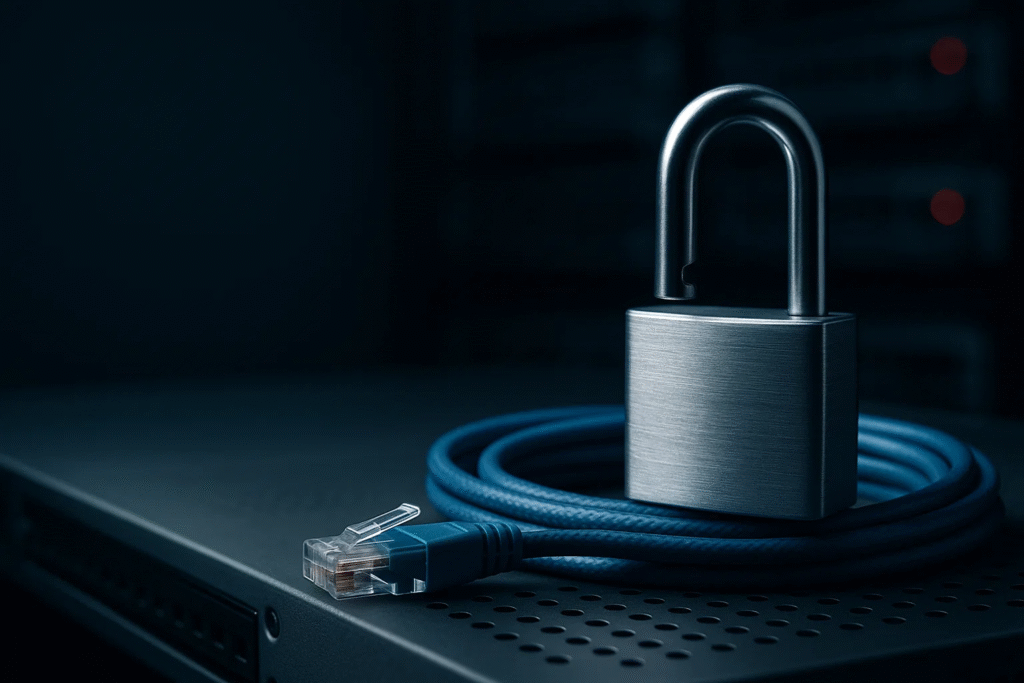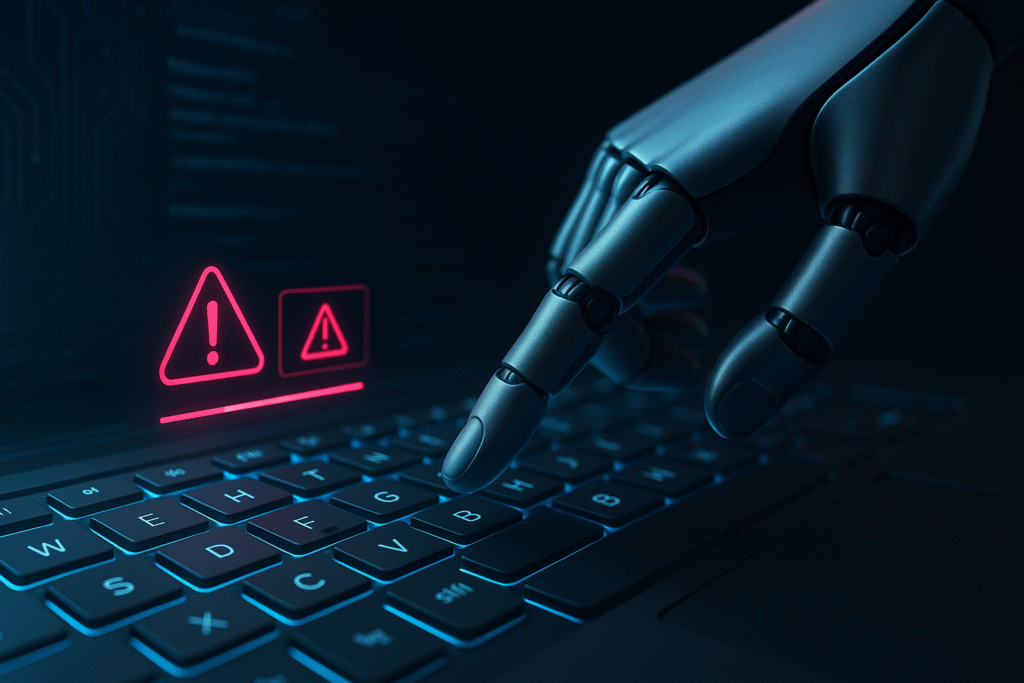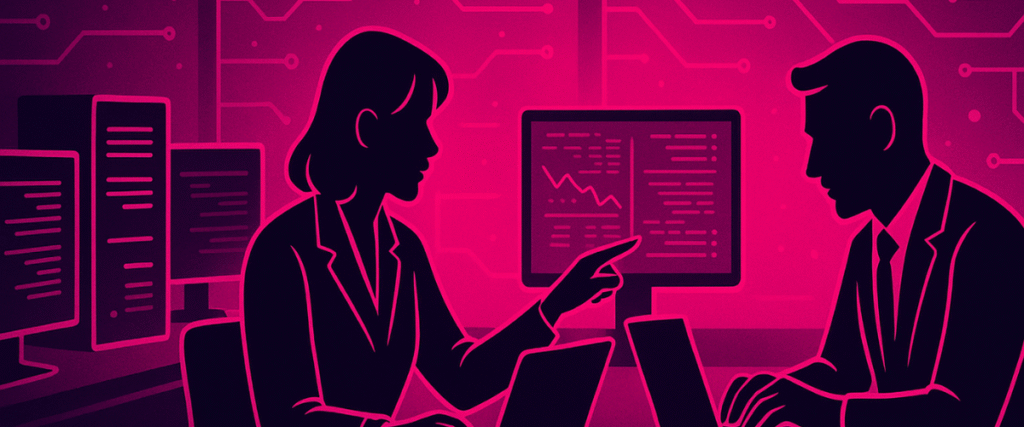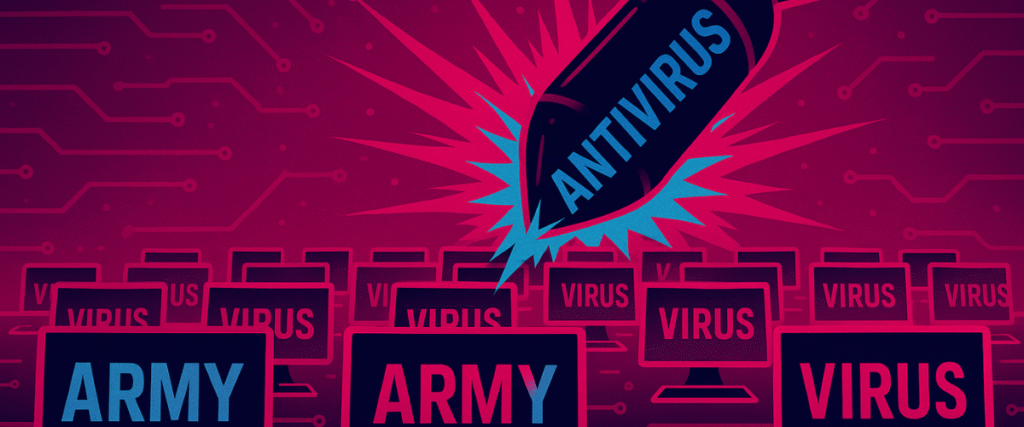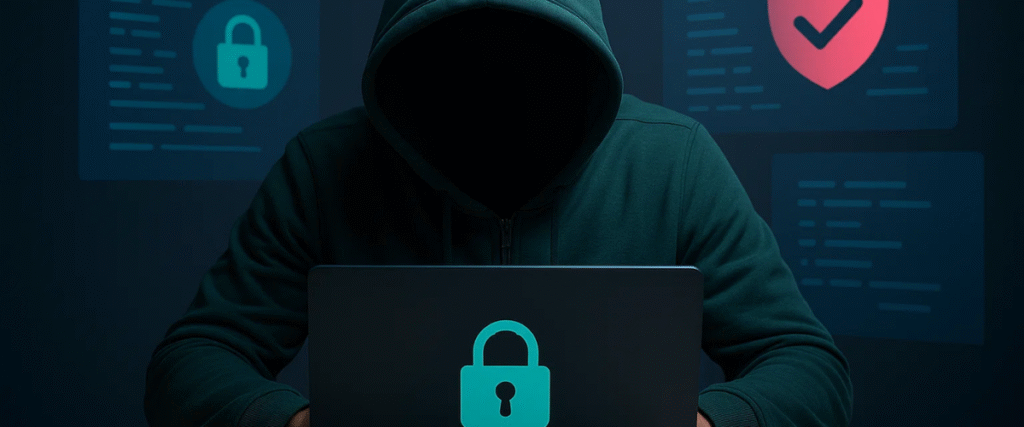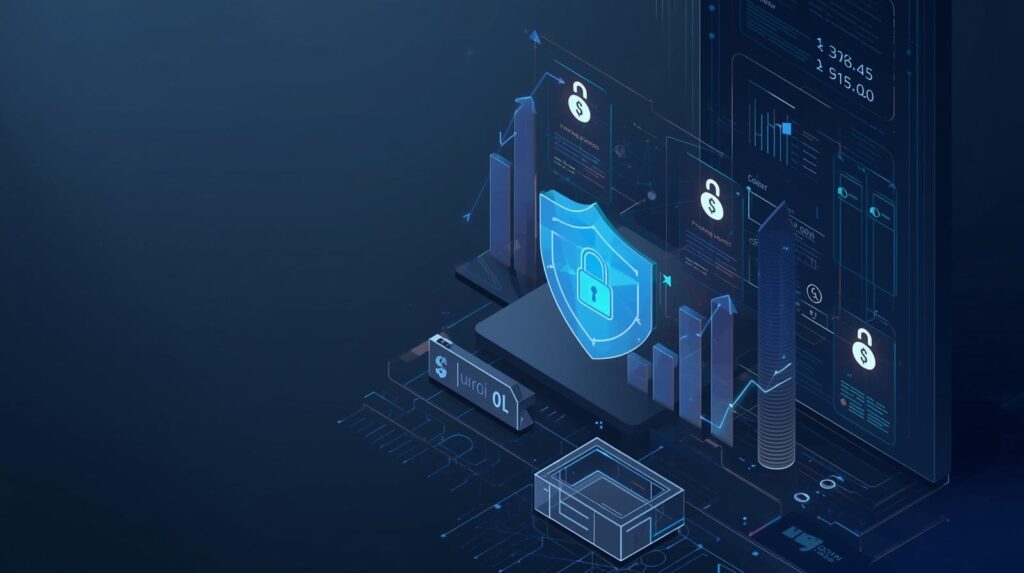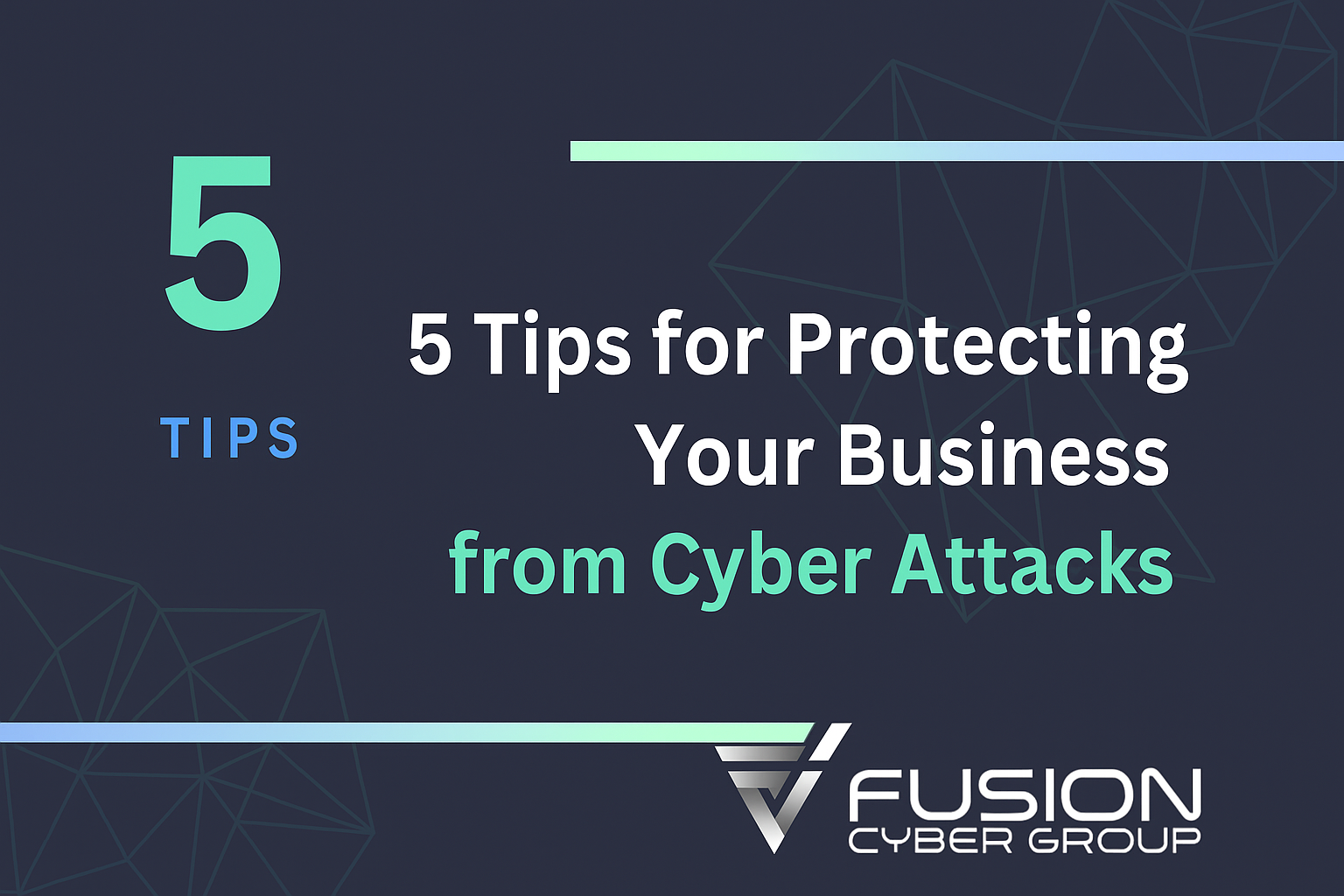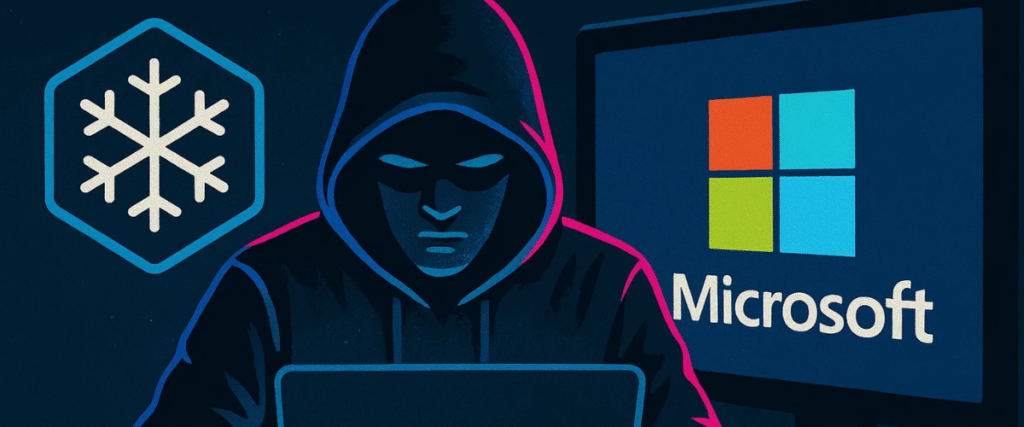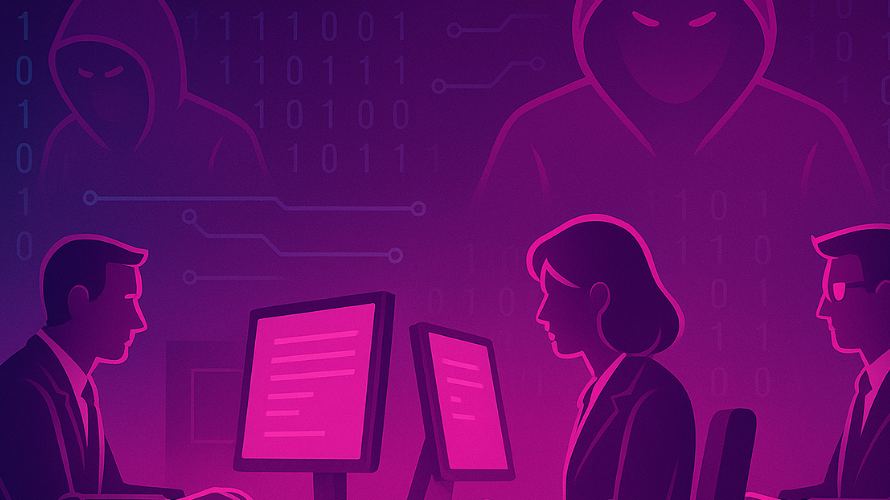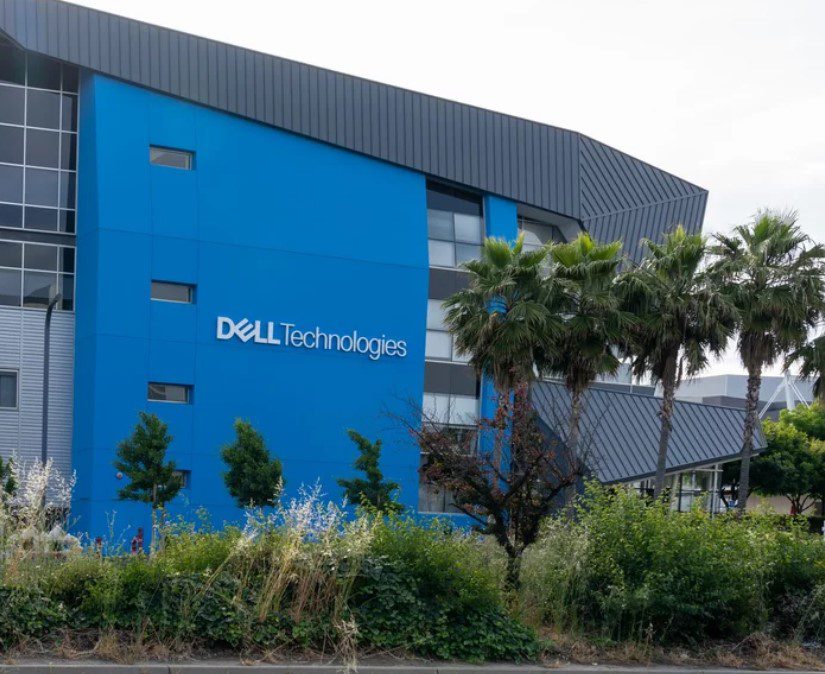
Endpoints Are the New Target — Secure Your SMB with Effective Endpoint Security Solutions
Is Your SMB Next?
Talk to a Fusion Cyber expert today to secure your devices and protect your operations.
A Shifting Attack Surface
Cybercrime doesn’t stand still. As large corporate networks get harder to breach, hackers are turning their attention to smaller businesses — and the devices employees use every day. These endpoints (laptops, desktops, smartphones, and even IoT devices) are where work happens — and where cybercriminals see opportunity.
The rise of hybrid and remote work has only made this challenge bigger. Employees now connect to company resources from home offices, coffee shops, and airports — often on personal devices or unsecured Wi-Fi networks. Each connection expands the attack surface, giving hackers more potential entry points.
To effectively secure your SMB with Endpoint Security for SMBs, vigilance is key. Implementing robust protections is crucial to safeguard your business from evolving cyber threats. Endpoint Security for SMBs is no longer optional; it’s vital for maintaining operational integrity and ensuring business continuity.
For SMB owners and executives across North America, this isn’t an abstract IT problem. An endpoint attack can disrupt operations, expose customer data, and damage hard-earned trust in a matter of hours. Even worse, many attacks go undetected for weeks, silently harvesting information until the damage is irreversible. The message is clear: without strong endpoint security, SMBs remain the easiest and most lucrative targets for today’s cybercriminals.
How Hackers Exploit Endpoints
Many business leaders assume their company devices are well protected. After all, they’re secured with passwords, updated regularly, and come with built-in safeguards. But hackers are finding ways in — especially through the everyday tools employees rely on.
Here are their most common tactics:
- Phishing Emails: Messages designed to trick employees into opening malicious attachments or clicking unsafe links.
- Ransomware: Malware that encrypts files and locks systems, demanding payment to restore access.
- Unpatched Software: Outdated operating systems and applications leave doors wide open for attackers.
- Compromised Devices: Infected smartphones, laptops, or IoT devices can spread malware across an entire network.
- Credential Theft: Stolen or weak passwords give cybercriminals insider-level access to company systems.
The takeaway: a single compromised endpoint can put sensitive data, customer trust, and your entire business at risk.mise an entire device—putting company data, customer information, and even financial records at risk.
Real-World Example
In 2024, a Canadian SMB in the healthcare sector suffered a ransomware attack that started with a single compromised laptop. The device had missed a critical security update. Within hours, attackers gained access to patient data and locked core systems, costing the business over $250,000 in downtime and recovery expenses.
This shows that endpoint attacks aren’t theoretical — they are happening daily across North America.
Why Endpoint Security Matters for SMB Leaders
For businesses with 5 to 250 employees, every device matters. Laptops, phones, and servers are the backbone of daily operations — managing customer relationships, processing payments, and accessing critical files. Unlike large enterprises that can absorb downtime or data loss with backup resources, SMBs operate with smaller margins, meaning one compromised device can impact the entire organization.
When compromised, the ripple effects are immediate and far-reaching:
- Loss of sensitive data including customer records, financial data, and intellectual property. For an SMB, a single breach of client information can not only cause financial penalties but also erode the trust built over years.
- Operational downtime that halts daily activities. A ransomware attack, for example, can freeze accounting systems, scheduling tools, and communication platforms, preventing employees from performing even the most basic tasks.
- Financial and reputational damage that overwhelms small businesses. Cybersecurity Ventures estimates that 60% of SMBs shut down within six months of a major cyber incident. Once trust is broken, customers may turn to competitors, and recovery can be nearly impossible.
- Compliance liabilities under laws like Canada’s PIPEDA or U.S. regulations such as HIPAA or state-level privacy acts. Non-compliance not only brings fines but can disqualify a business from working with larger partners who demand proof of security readiness.
In short, endpoint security is not just an IT concern — it is a business survival issue. Protecting endpoints ensures that SMBs can continue to serve their customers, safeguard revenue, and remain competitive in an increasingly hostile digital landscape.
The reality: most endpoint attacks stay hidden—until they’ve already spread.
Building a Comprehensive Endpoint Security Strategy
Endpoint Security for SMBs requires more than just tools — it demands a balance of advanced technology, strict processes, and continuous user training. Many SMBs mistakenly believe that deploying a single security product, like antivirus software, is enough. In reality, attackers exploit the weakest link — whether it’s outdated software, unclear policies, or an employee clicking the wrong link.
A comprehensive strategy includes:
- Technology: Using advanced EDR/XDR solutions, firewalls, and automated patching. These tools not only detect and respond to threats in real time but also provide valuable visibility into the entire network. For SMBs with limited IT staff, automation reduces human error and ensures that critical updates are applied quickly. Pairing automation with cloud-based dashboards also gives leaders real-time oversight.
- Processes: Clear policies on device use, data handling, and software updates. Well-defined procedures set expectations, reduce ambiguity, and help employees understand their responsibilities. Regular audits, documented incident response plans, and compliance checks reinforce these processes and ensure alignment with industry regulations.
- People: Regular security awareness training to keep employees vigilant. Human error remains one of the biggest entry points for attackers. By building a culture of cybersecurity, SMBs empower employees to recognize phishing attempts, follow safe practices, and act as the first line of defense.
By combining these three elements, SMBs can safeguard critical assets, minimize vulnerabilities, and maintain operational continuity even under pressure. This holistic approach not only prevents costly breaches but also strengthens customer trust, protects long-term reputation, and creates resilience in a digital-first economy.
Key Measures to Protect Your SMB
Securing your SMB starts with practical, high-impact measures that can be implemented quickly and deliver immediate protection:
- Deploy Endpoint Protection & EDR: Advanced Endpoint Detection and Response (EDR) tools don’t just stop known threats; they analyze behavior patterns to detect suspicious activity before it escalates. For example, if ransomware begins encrypting files, EDR can isolate the device and prevent it from spreading across the network.
- Keep Devices Updated: Cybercriminals thrive on exploiting old vulnerabilities. Enabling automatic updates for operating systems, browsers, and apps ensures patches are applied without relying on staff to remember manual updates. Even one outdated laptop can create a backdoor into your systems.
- Enforce Multi-Factor Authentication (MFA): MFA stops attackers in their tracks, even if employee credentials are stolen through phishing. A simple additional verification step — like a code sent to a mobile device — drastically lowers the chances of a breach.
- Secure Mobile Devices with MDM: Mobile Device Management (MDM) extends protection beyond the office. Lost or stolen phones can be remotely locked or wiped, preventing sensitive business or customer data from falling into the wrong hands.
- Train Your Team: Employees often underestimate their role in cybersecurity. Ongoing training sessions that simulate phishing attempts and explain safe practices ensure that staff stay alert to evolving threats.
These measures work best when combined. Together, they create overlapping layers of defense that not only block potential breaches but also strengthen resilience, giving SMBs the same type of security posture once reserved for large enterprises.
Why Endpoint Security Protects Business Integrity
The real value of endpoint security lies in protecting business integrity. Beyond preventing malware or ransomware, a strong security posture ensures that sensitive data — from client records to financial information — remains safe.
This helps:
- Maintain customer trust. Clients want to know their data is protected.
- Safeguard reputation. One publicized breach can take years to recover from.
- Ensure compliance. Strong endpoint security helps businesses meet requirements under privacy laws.
Without robust endpoint protection, a single compromised laptop or smartphone could trigger downtime, compliance penalties, and financial losses.
The Role of MSSPs in Strengthening Endpoint Security
For many SMBs, managing cybersecurity in-house is costly and unrealistic. This is where a Managed Security Service Provider (MSSP) like Fusion Cyber makes a difference.
MSSPs deliver:
- 24/7 monitoring for suspicious endpoint activity, ensuring threats are caught before they escalate.
- Rapid incident response to contain and eliminate attacks, minimizing downtime and financial loss.
- Compliance support with regulations like PIPEDA and state-level privacy laws, reducing legal risks.
- Predictable costs compared to building an in-house security team, making advanced protection accessible to SMBs.
Beyond technology, MSSPs bring expertise. They continuously update defenses against new threats, provide guidance on best practices, and act as a trusted partner in shaping long-term security strategy. For SMB leaders, this partnership means enterprise-grade protection without the overhead — and the confidence that security won’t become a barrier to growth.elp reinforce internal security culture, ensuring employees know their role in keeping devices safe.
Common Mistakes SMBs Make with Endpoint Security
Even businesses that invest in cybersecurity often make mistakes that leave them vulnerable. The most common include:
- Assuming antivirus is enough. Traditional antivirus only stops known threats; modern attacks require advanced solutions like EDR/XDR.
- Delaying updates because they “interrupt work.” Hackers exploit outdated software faster than most companies apply patches.
- Failing to secure mobile and IoT devices. Every connected device is a potential backdoor into your network.
- Not training employees regularly. Human error is still the #1 cause of breaches.
- Ignoring compliance obligations. Non-compliance not only risks fines but also damages customer trust.
These gaps turn small oversights into major security risks, giving cybercriminals easy ways to infiltrate SMB environments..
A Long-Term Commitment to Cybersecurity
Endpoint security isn’t a one-time project — it’s an ongoing commitment. Cyber threats evolve quickly, which means yesterday’s defenses may not be enough tomorrow.
Regular audits, security awareness refreshers, and technology upgrades are essential to maintaining strong defenses. SMBs should schedule periodic penetration tests, review access controls, and update policies to keep pace with emerging risks. Cybersecurity awareness is not a “set it and forget it” exercise; it requires reinforcement through real-world simulations like phishing drills and tabletop exercises.
SMBs that prioritize endpoint security not only reduce risk but also build resilience. This proactive approach fosters business continuity, strengthens customer confidence, and creates a culture of vigilance that makes the organization harder to attack and quicker to recover when incidents occur.
Future Trends in Endpoint Security
Malware or ransomware can devastate a business in minutes, but a strong endpoint security posture ensures that sensitive data — from client records to financial information — remains safe. Protection goes beyond technology; it’s about business resilience.
This helps:
- Maintain customer trust. Clients need confidence that their personal or financial information is safe in your hands. Once trust is broken, customers may turn to competitors.
- Safeguard reputation. One publicized breach can dominate headlines and social media, creating lasting damage that takes years — and significant resources — to repair.
- Ensure compliance. Strong endpoint security helps businesses align with regulations such as Canada’s PIPEDA, Quebec’s Law 25, and U.S. state-level privacy laws, avoiding costly fines and legal consequences.
Without robust endpoint protection, a single compromised laptop or smartphone could trigger operational downtime, data leaks, and regulatory penalties. For SMBs with limited margins, even one incident can be financially crippling, making proactive endpoint defense a non-negotiable priority.
Closing Thoughts
Endpoints are the frontlines of cybersecurity — and for small and mid-sized businesses, protecting them is mission-critical. Hackers know SMBs often lack enterprise-level defenses, making them prime targets. Unlike large corporations with dedicated IT teams and multimillion-dollar budgets, SMBs frequently operate with limited resources, making even a single security gap devastating.
The consequences of neglecting endpoint security extend beyond the immediate technical disruption. A ransomware attack or data breach can halt operations, damage your credibility with customers, and result in steep regulatory fines. Even more concerning, reputational damage can linger long after the technical issues are resolved. In today’s competitive environment, many SMBs cannot afford the financial or operational setback caused by a single compromised device.
The good news: with the right partner, you don’t have to be an easy target. Fusion Cyber provides enterprise-grade endpoint security designed specifically for SMBs, offering the same advanced protections used by large corporations — but tailored to your scale and budget. From 24/7 monitoring and rapid incident response to compliance support and employee training, our services are built to cover every angle of endpoint protection.
With Fusion Cyber as your MSSP, you gain peace of mind knowing your business, your customers, and your reputation are protected against evolving threats. Cybersecurity is not just about defense — it’s about enabling your business to grow, innovate, and compete without fear of disruption.
Featured links:
Heimdal’s 5 Endpoint Protection Methods
Endpoint Security: A Quick Overview
FAQ:
What is endpoint security for SMBs?
Endpoint security protects the devices your team uses every day — laptops, desktops, smartphones, and tablets. It keeps hackers from using these devices to steal data, spread malware, or shut down your business.
Why are SMBs in North America at higher risk for endpoint attacks?
Smaller businesses often don’t have the same cybersecurity resources as large corporations. Hackers know this and see SMBs as easier targets. One weak or unprotected device can put the entire company at risk.
How does an MSSP help protect SMB endpoints?
A Managed Security Service Provider (MSSP) like Fusion Cyber monitors your devices 24/7, detects threats in real time, applies updates, and responds quickly to attacks. This gives SMBs enterprise-level protection without the cost of building an in-house security team.

Incident Response: 6-Step Endpoint Playbook
A written playbook turns chaos into action.
- Detect – EDR alert or user report triggers the process.
- Contain – Isolate the endpoint from the network within minutes.
- Eradicate – Kill processes, remove persistence, patch the vulnerability.
- Recover – Restore from clean backups, reissue credentials, rejoin the domain.
- Notify – Escalate internally; consider legal/privacy obligations where applicable.
- Learn – Run a post-incident review; update controls and training.
Practice this quarterly with a tabletop exercise.

Measuring Success: KPIs That Matter
Track a few leading indicators to prove Endpoint Security for SMBs is working:
- Patch latency (median days) – aim for <7 days for critical updates.
- EDR coverage (%) – target >98% of corporate devices.
- MFA adoption (%) – push to 100% for email, VPN, and admin portals.
- Phishing failure rate (%) – measure via simulations; trend down monthly.
- MTTD / MTTR – mean time to detect/respond; shorten each quarter.
- Asset accuracy (%) – inventory matches reality; reduces shadow IT.
- Backup RPO/RTO – recovery point/time objectives consistently met.
Report these in a simple monthly dashboard for leadership

30-Day Quick-Start Plan
Week 1: Inventory devices; deploy EDR to 20% pilot; enable critical OS updates.
Week 2: Roll out MFA to email/VPN/admins; expand EDR to 60%; block legacy protocols.
Week 3: Enroll mobiles in MDM; enforce encryption, screen lock, and remote wipe; set DNS filtering.
Week 4: Phishing simulation + 45-minute training; run an incident tabletop; publish a 1-page BYOD policy.
Repeat monthly until coverage reaches 95%+.
Our Cybersecurity Guarantee
“At Fusion Cyber Group, we align our interests with yours.“
Unlike many providers who profit from lengthy, expensive breach clean-ups, our goal is simple: stop threats before they start and stand with you if one ever gets through.
That’s why we offer a cybersecurity guarantee: in the very unlikely event that a breach gets through our multi-layered, 24/7 monitored defenses, we will handle all:
threat containment,
incident response,
remediation,
eradication,
and business recovery—at no cost to you.
Ultimately, securing your SMB with effective endpoint security solutions can safeguard your business’s future.
Ready to strengthen your cybersecurity defenses? Contact us today for your FREE network assessment and take the first step towards safeguarding your business from cyber threats!
Implementing robust Endpoint Security for SMBs is crucial to safeguard your business from evolving cyber threats.
Implementing these strategies is crucial to secure your SMB with effective endpoint security solutions.
To effectively secure your SMB with effective endpoint security solutions, it is critical to understand the risks associated with unsecured endpoints.









